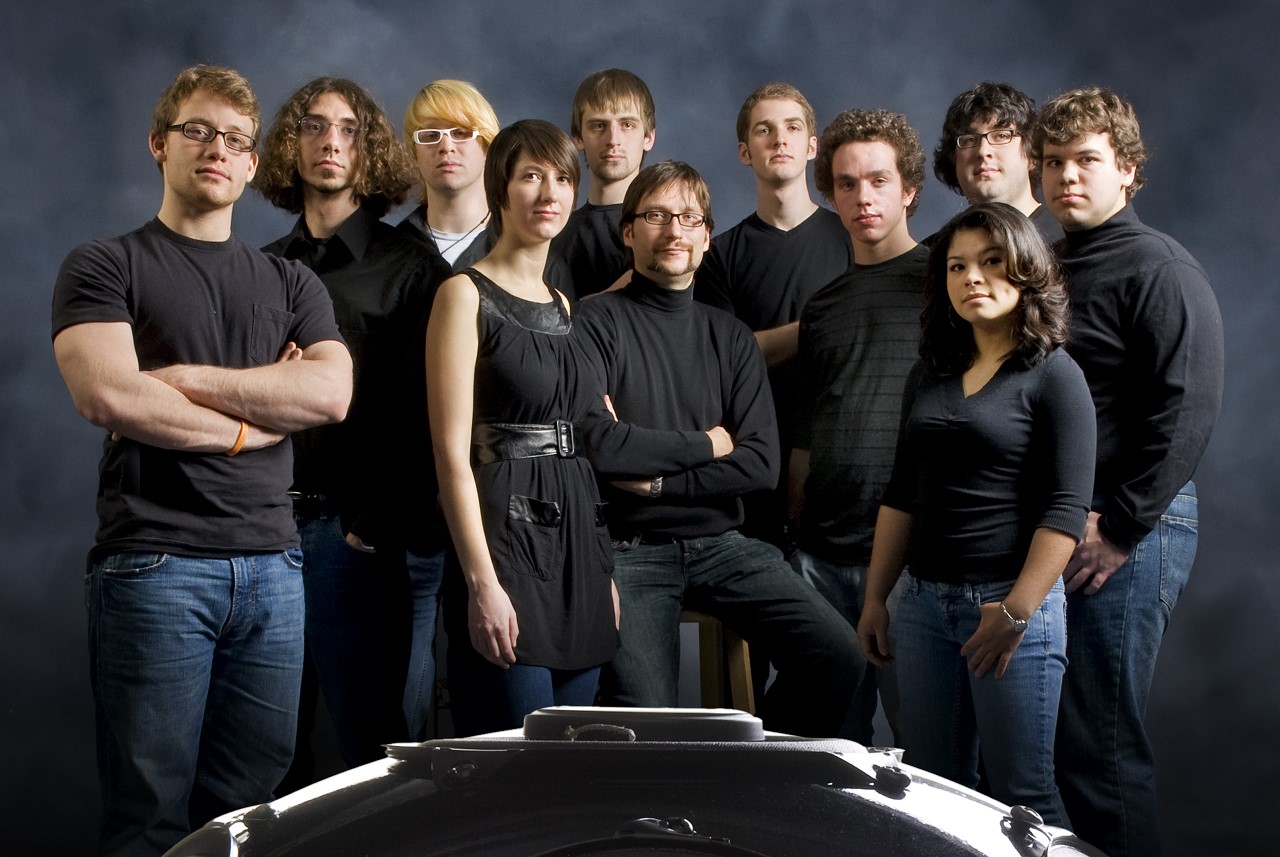How to Conduct an Orchestra Without Musical Instruments
December 15, 2016

What if a conductor didn’t have to rely on musicians playing bassoons and violas and timpani? What if the conductor’s very motions — the finger taps and arm flourishes — were what created the symphonic sounds?
That question drives my students’ and my own passion for discovery with our unusual ensemble, the world’s first Linux-based orchestra.
Our Linux Laptop Orchestra, or L2Ork (which we pronounce lork), combines a traditional musical ensemble with human-computer interaction technologies. I long wanted to experiment with combining the two not just to explore the edges, but also to broaden musical participation beyond musicians. Our orchestra brings together students from disciplines across campus, including the performing and visual arts, audio engineering, computer science, the humanities, and industrial design.
I also became intrigued with how Linux, as an open-source operating system, has turned the commercial arena on its head. So, to make orchestral music both affordable and accessible, I created Pd-L2Ork, a variant of the visual programming language Pure Data. Our laptop orchestra offers an optimal infrastructure for creative research at minimal cost. Unlike traditional instruments, which provide specific roles in an ensemble, laptops can produce any sound and fulfill just about any role. We supplement them with affordable technologies, including circuits, gaming controllers, speakers made from salad bowls, and microphones we can breathe into, just like woodwind instruments. We’re also experimenting with Raspberry Pi computers as an even more affordable platform.
L2Ork uses reverse-engineered Nintendo Wii remote controllers to convert human motion into sound. Recently, we began exploring alternative, Wiimote-like designs to make the controller less intrusive. We’re also leveraging the ability of human skin to conduct electricity, thus creating inexpensive low-voltage “keys” out of our fingertips.
We choreograph our movements borrowing cues from tai chi. At first, we looked like we were swatting flies. Now, with the introduction of the choreography, we better resemble music in motion. In 2009, we debuted in front of a standing-room-only crowd. It was shaky; one of our laptops crashed in the middle of the performance. But I don’t think anyone noticed. The best part of the concert was at the end, when everyone in the audience flocked to the stage, curious to learn more. We’ve since given performances across the United States and Europe. And we’ve helped start seven laptop orchestras in North and South America, most of which rely heavily on L2Ork’s affordable design.
People ask, why are you doing this? You’re a music professor. My answer is that music and technology are inseparable. Today, more than ever, musicians have an opportunity to define ourselves much more broadly and to collaborate across disciplinary divides. With L2Ork, my students combine technical virtuosity with musical exploration, unencumbered by expectations.
To me, the most powerful element of the orchestra is its empowerment of students to take creative risks. That can be life changing.
Ivica Ico Bukvic is an associate professor of composition and multimedia in Virginia Tech’s School of Performing Arts.
This article appeared as part of “Creative Genius” in the 2016–2017 issue of Illumination.


